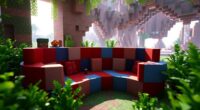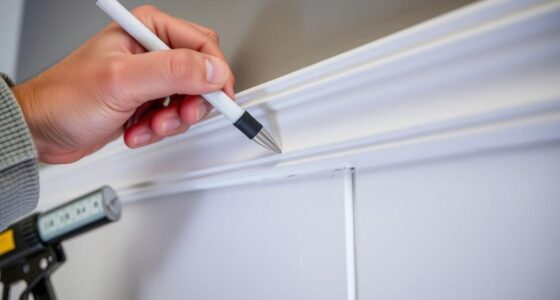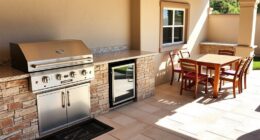America doesn't build brick houses primarily due to cost and practicality. Wood-frame construction is cheaper and easier to handle, making it a popular choice among builders. Skilled masonry labor is more expensive, and the installation process takes longer. Plus, recent shifts in building codes favor lighter materials, diminishing brick's role. While bricks offer durability and aesthetic appeal, the complexities of maintenance and structural support often make them less attractive to homeowners. There's more to explore about how changing trends and attitudes might impact this landscape moving forward.
Key Takeaways
- Wood-frame construction is significantly cheaper, averaging $18 per square foot compared to masonry, which can triple this cost.
- Higher labor costs and time-consuming installation make brick less appealing to builders.
- Evolving building codes favor lighter, cost-effective materials, reducing brick's role in construction.
- Environmental concerns and the decline of local brick manufacturers complicate sourcing sustainable materials.
- Maintenance of brick structures is complex and costly, leading builders to prefer simpler wood options.
Cost Factors in Construction
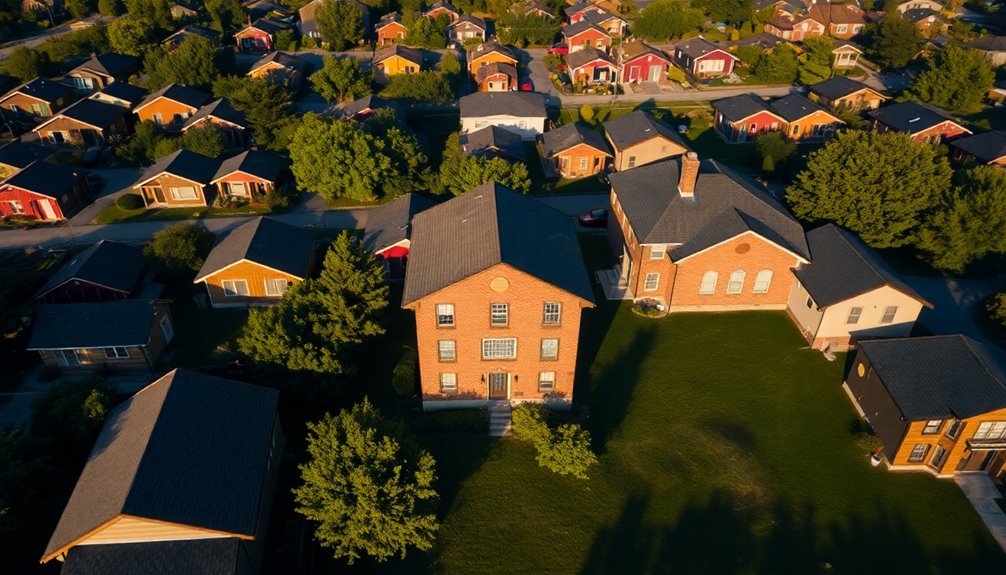
When it comes to building homes, cost is often the deciding factor.
You'll find that wood-frame construction typically runs around $18 per square foot, while masonry construction can triple that cost. This significant price difference makes wood a more attractive option for builders.
The demand for brick homes dropped post-WWII as suburban living favored faster, cheaper wood-frame builds. Hiring skilled masons for masonry work adds to overall construction costs, as their labor is pricier than that for wood framing.
Changes in building codes have also removed previous brick requirements, pushing builders toward more versatile, cost-effective materials.
With economic pressures and lawsuits against homebuilders, the cautious approach to traditional masonry solidifies the trend toward affordable construction options. Additionally, the increasing focus on sustainability and responsible investing has led some developers to consider alternative materials that may offer both cost savings and environmental benefits.
Environmental Considerations
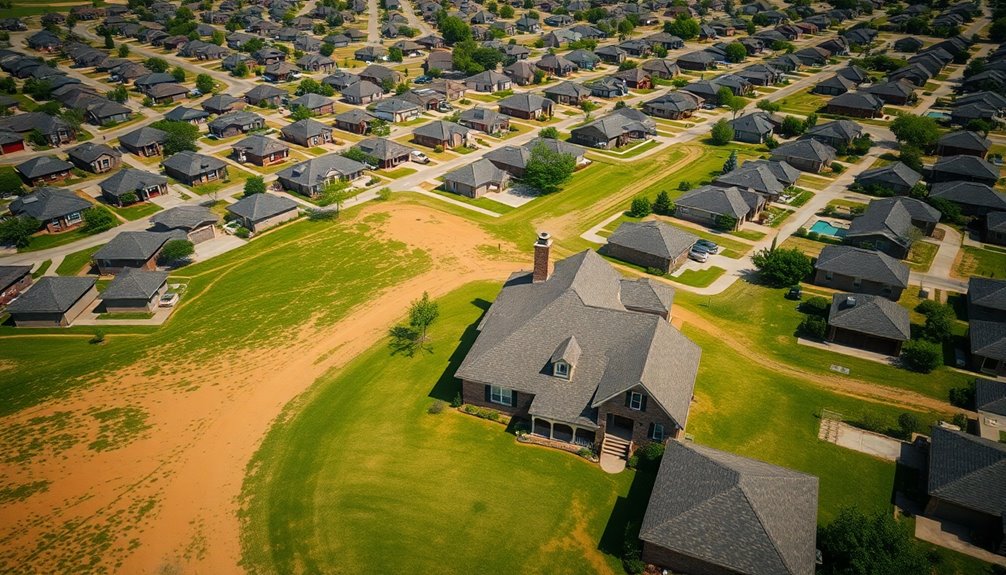
Although brick has long been admired for its durability and aesthetic appeal, environmental considerations are increasingly influencing builders' material choices. The manufacturing of brick requires high energy input and relies heavily on fossil fuels, contributing notably to global carbon emissions.
This growing concern about environmental impacts pushes many to seek more sustainable building materials. Wood, for example, is renewable, absorbs carbon dioxide, and has a lower transportation energy requirement.
With the decline of local brick manufacturers, sourcing sustainable materials has become more challenging, especially for those pursuing LEED certification. As awareness of carbon footprints rises, builders are reevaluating traditional materials like brick in favor of options that align with sustainable construction practices, promoting a greener future.
Installation and Maintenance Challenges
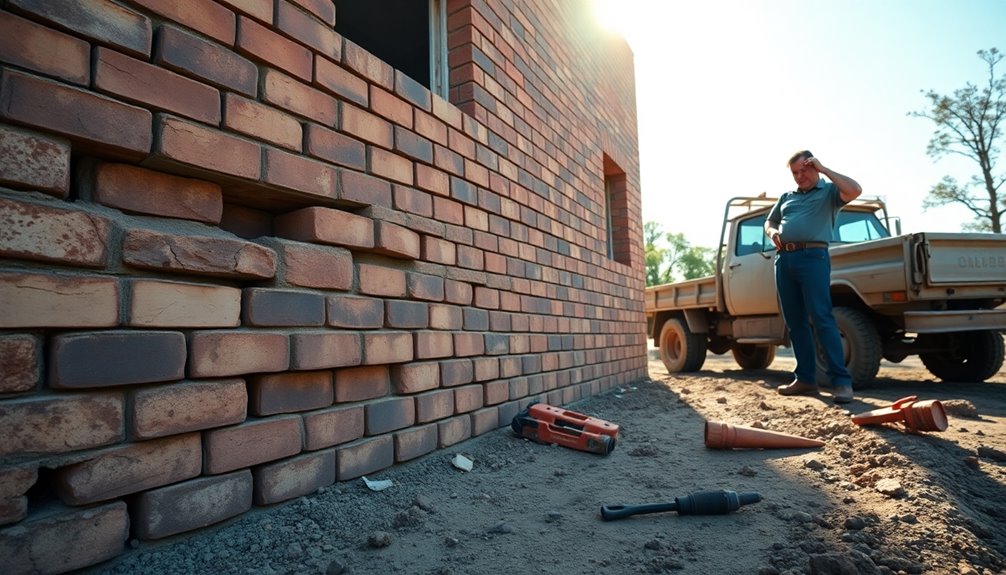
Installing and maintaining brick houses presents unique challenges that can deter builders despite their many advantages. The installation process is markedly more time-consuming than working with a wood frame, leading to higher labor costs associated with masonry work.
Additionally, the weight of brick requires careful handling and structural support, complicating the installation and repair processes.
When it comes to maintenance, repairs on brick structures can be complex and costly due to their durability, often necessitating specialized skills for effective restoration.
While the aesthetic value and long-lasting nature of brick homes are appealing, these installation and maintenance challenges can make some builders hesitant to choose this material over more straightforward options like wood framing.
Shifts in Building Codes
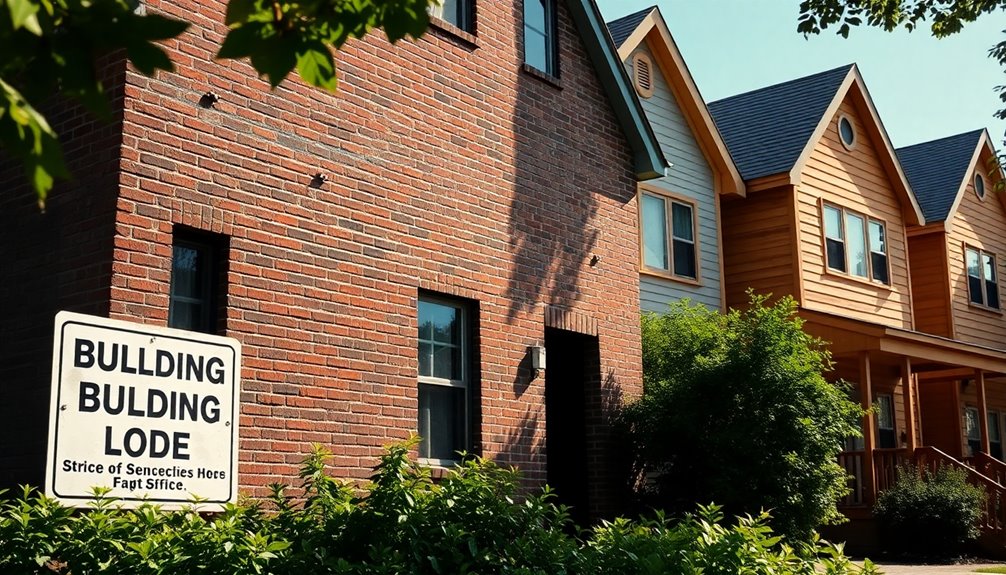
As building codes evolve, they increasingly favor lighter and more cost-effective materials over traditional brick, reshaping construction practices across the country.
These shifts in building codes have eliminated historical requirements for brick usage, leading to its decline in new residential construction.
In today's contemporary housing market, the focus is on steel and wood framing, which are often viewed as more economical options.
Additionally, modern building codes emphasize stringent structural integrity requirements that complicate the use of bricks compared to these alternative materials.
As a result, builders often opt for cheaper, lighter materials, further diminishing brick's role in home building.
This trend highlights a significant change in how we approach residential construction today.
Future Prospects for Brick Homes
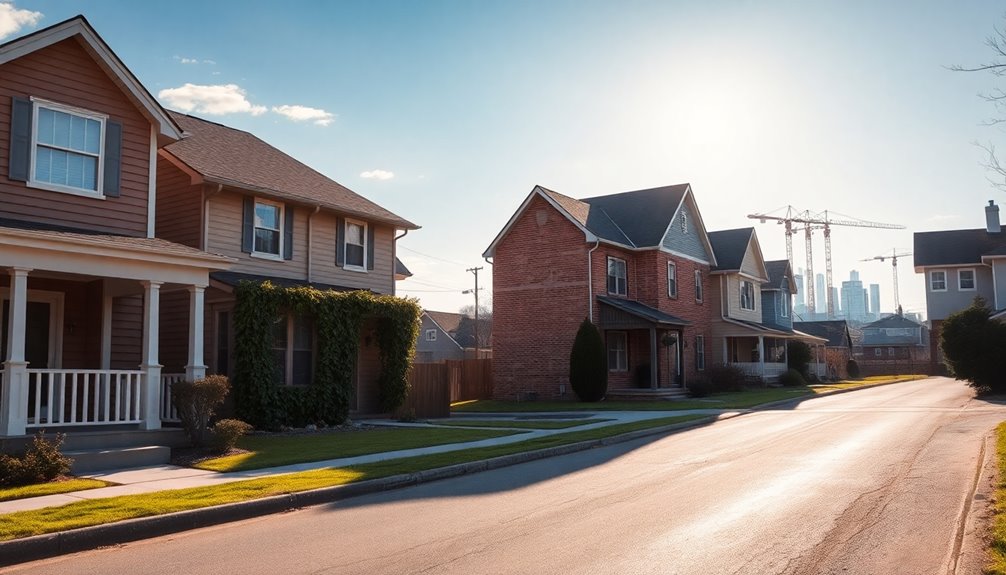
While the future of brick homes may seem uncertain, several emerging trends suggest a potential revival of this traditional building material.
Technological advancements in masonry construction promise more efficient installation processes, making brick homes more appealing. You might also notice a growing appreciation for brick's craftsmanship and historical significance, which could spark increased demand for these durable homes.
As climate resilience becomes a priority, many are reevaluating brick's sustainable qualities in home design. Market trends indicate a shift toward classic materials, with consumers prioritizing durability and long-term value.
Additionally, innovative hybrid materials that blend brick's durability with modern techniques could enhance its viability in the competitive housing market, paving the way for a brighter future for brick homes.
Frequently Asked Questions
Why Are Houses in the USA Not Made of Bricks?
You might notice that houses in the USA aren't typically made of bricks, and there are a few reasons for this.
First, wood-frame construction is lighter, cheaper, and quicker to build. It's also easier to find skilled labor for woodwork than for masonry.
Additionally, modern building codes often favor materials that are more cost-effective.
Finally, environmental considerations push builders towards renewable resources like wood, making it a more popular choice overall.
Why Do They Not Build Brick Houses Anymore?
You might notice that many new homes aren't made of brick anymore. This change coincides with a surge in demand for cheaper, lighter materials, like wood.
Builders prefer these options due to lower costs and easier installation. You've probably seen how modern codes now favor versatility over traditional brick aesthetics.
Plus, local brick manufacturers have dwindled, making it harder to source, while environmental concerns push for more sustainable choices.
Can You Build a Brick House in the USA?
Yes, you can build a brick house in the USA.
While it's technically feasible, you'll find that most modern construction favors lighter materials due to cost and speed.
Hiring skilled masons and sourcing bricks can get pricey, so it's crucial to weigh your options.
If you love the durability and aesthetic of brick, consider it, but be prepared for the challenges and expenses that come with it.
Your choice can make a lasting impact!
Why Are There No Concrete Houses in the USA?
You might wonder why you don't see more concrete houses in the U.S. The primary reasons are cost and labor.
Building with concrete can be expensive, with higher installation costs compared to wood-frame homes. Plus, modern building codes don't require masonry materials, making wood the go-to choice for many builders.
While concrete offers durability and fire resistance, consumer preferences lean toward lighter, more flexible materials, keeping wood as the dominant option in residential construction.
Conclusion
So, as you explore the reasons behind America's preference for other building materials, you might wonder: will brick homes ever make a comeback? With rising environmental concerns and evolving building codes, the future could hold surprising twists. Imagine walking through a neighborhood where brick houses stand resilient against the elements, blending tradition with modern sustainability. Could this vision become a reality? Only time will tell, but the journey to that answer is sure to be fascinating.

